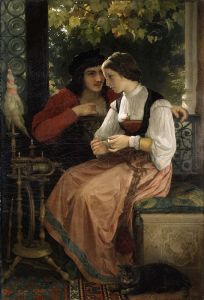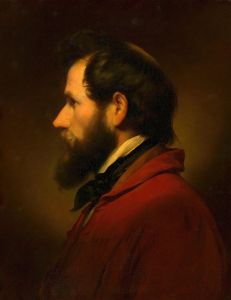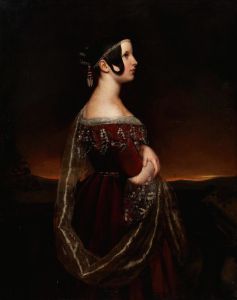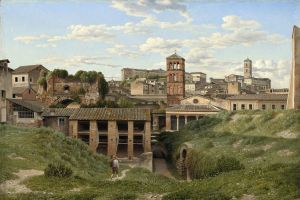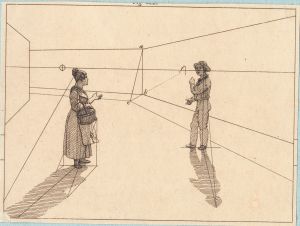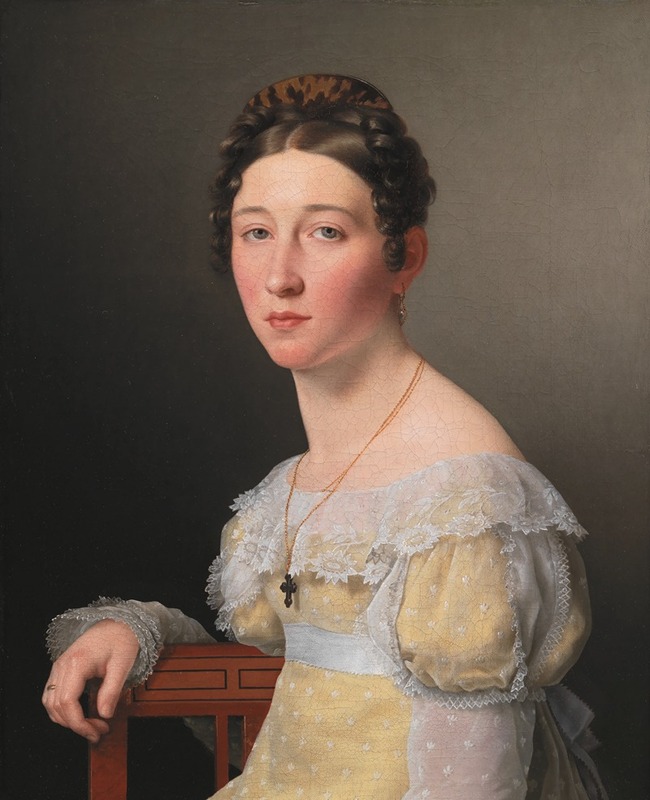
Portrait of Emilie Henriette Massmann, Betrothed of Frederik Wilhelm Caspar von Benzon
A hand-painted replica of Christoffer Wilhelm Eckersberg’s masterpiece Portrait of Emilie Henriette Massmann, Betrothed of Frederik Wilhelm Caspar von Benzon, meticulously crafted by professional artists to capture the true essence of the original. Each piece is created with museum-quality canvas and rare mineral pigments, carefully painted by experienced artists with delicate brushstrokes and rich, layered colors to perfectly recreate the texture of the original artwork. Unlike machine-printed reproductions, this hand-painted version brings the painting to life, infused with the artist’s emotions and skill in every stroke. Whether for personal collection or home decoration, it instantly elevates the artistic atmosphere of any space.
The "Portrait of Emilie Henriette Massmann, Betrothed of Frederik Wilhelm Caspar von Benzon" is a painting by the renowned Danish artist Christoffer Wilhelm Eckersberg. Eckersberg, often referred to as the "father of Danish painting," played a pivotal role in the development of the Danish Golden Age of painting. His works are celebrated for their clarity, precision, and adherence to neoclassical ideals.
This particular portrait, created in 1827, exemplifies Eckersberg's skill in capturing the likeness and character of his subjects with meticulous attention to detail. Emilie Henriette Massmann, the subject of the painting, was engaged to Frederik Wilhelm Caspar von Benzon, a member of the Danish nobility. The portrait was likely commissioned to commemorate their engagement, a common practice among the upper classes during this period.
Eckersberg's approach to portraiture was heavily influenced by his studies in Paris under the tutelage of Jacques-Louis David, a leading figure in the neoclassical movement. This influence is evident in the composition and style of the portrait, which emphasizes simplicity, balance, and a restrained color palette. The artist's focus on realism and the accurate depiction of his subjects' features is a hallmark of his work.
In the portrait, Emilie Henriette Massmann is depicted with a serene and composed expression, reflecting the neoclassical ideal of calm and rational beauty. Her attire is elegant yet understated, in keeping with the fashion of the early 19th century. The background is simple and unobtrusive, ensuring that the viewer's attention remains on the subject.
Eckersberg's portraits are noted for their psychological depth, and this painting is no exception. Through subtle details such as the positioning of Massmann's hands and the gentle turn of her head, Eckersberg conveys a sense of her personality and social standing. The artist's ability to capture the nuances of his subjects' characters contributed to his reputation as one of Denmark's foremost portrait painters.
The painting is part of the collection at the Statens Museum for Kunst (The National Gallery of Denmark) in Copenhagen, where it is preserved as an important example of Eckersberg's work and the broader Danish Golden Age of painting. The museum houses a significant collection of Eckersberg's works, reflecting his lasting impact on Danish art and his role in shaping the artistic landscape of the 19th century.
Eckersberg's influence extended beyond his own work; he was also a dedicated teacher at the Royal Danish Academy of Fine Arts, where he mentored a generation of artists who would continue to define Danish art in the years to come. His emphasis on observation, precision, and the study of nature left a lasting legacy on his students and the art world.
In summary, the "Portrait of Emilie Henriette Massmann, Betrothed of Frederik Wilhelm Caspar von Benzon" is a testament to Christoffer Wilhelm Eckersberg's mastery of portraiture and his contribution to the Danish Golden Age of painting. Through his careful attention to detail and commitment to neoclassical principles, Eckersberg created a work that not only captures the likeness of its subject but also offers insight into the cultural and artistic values of the time.





